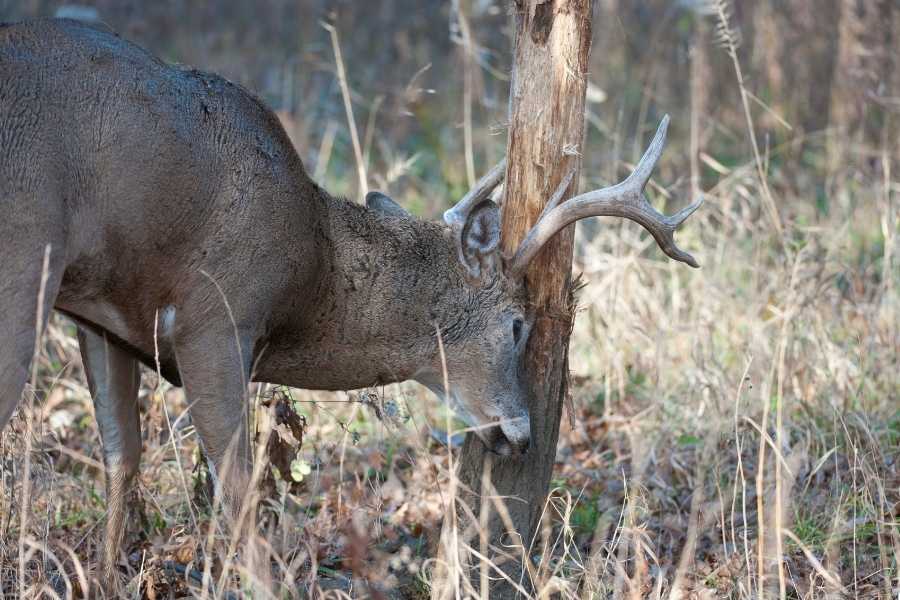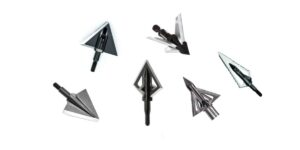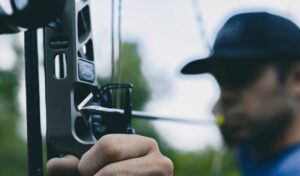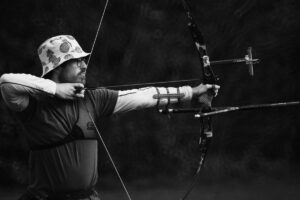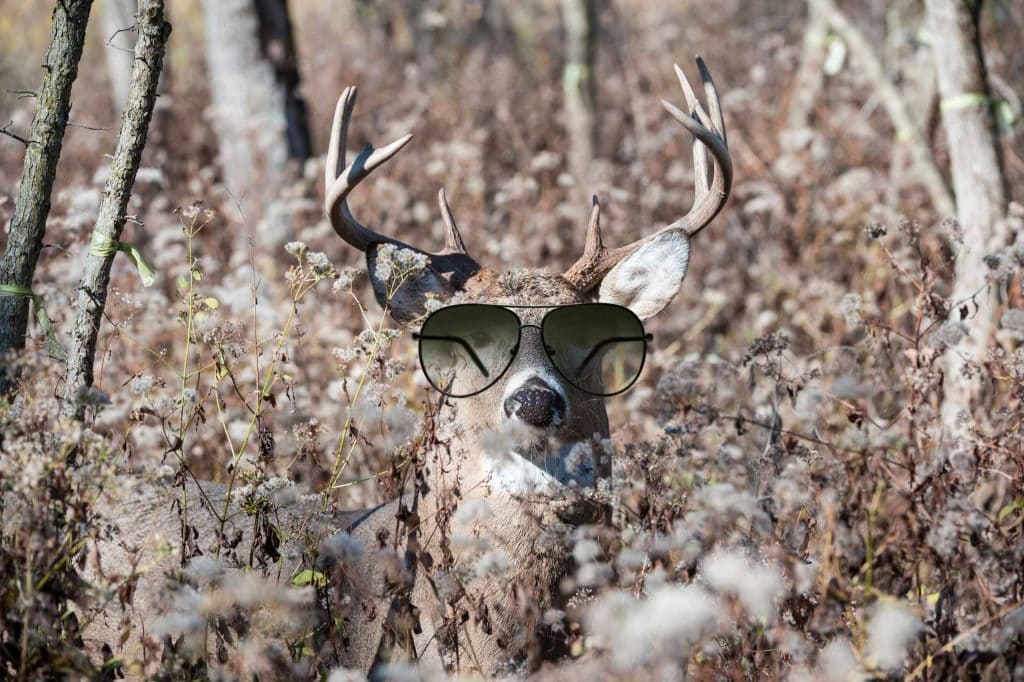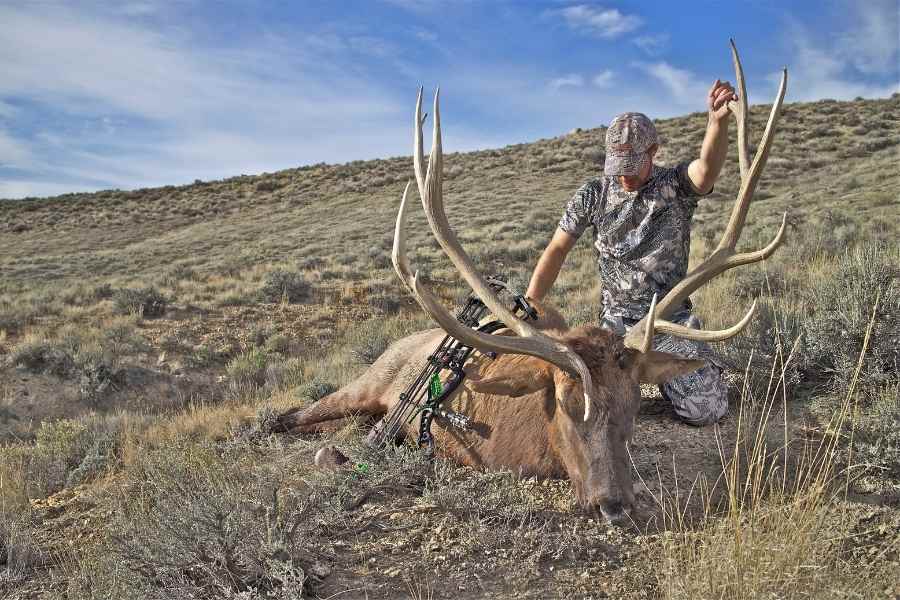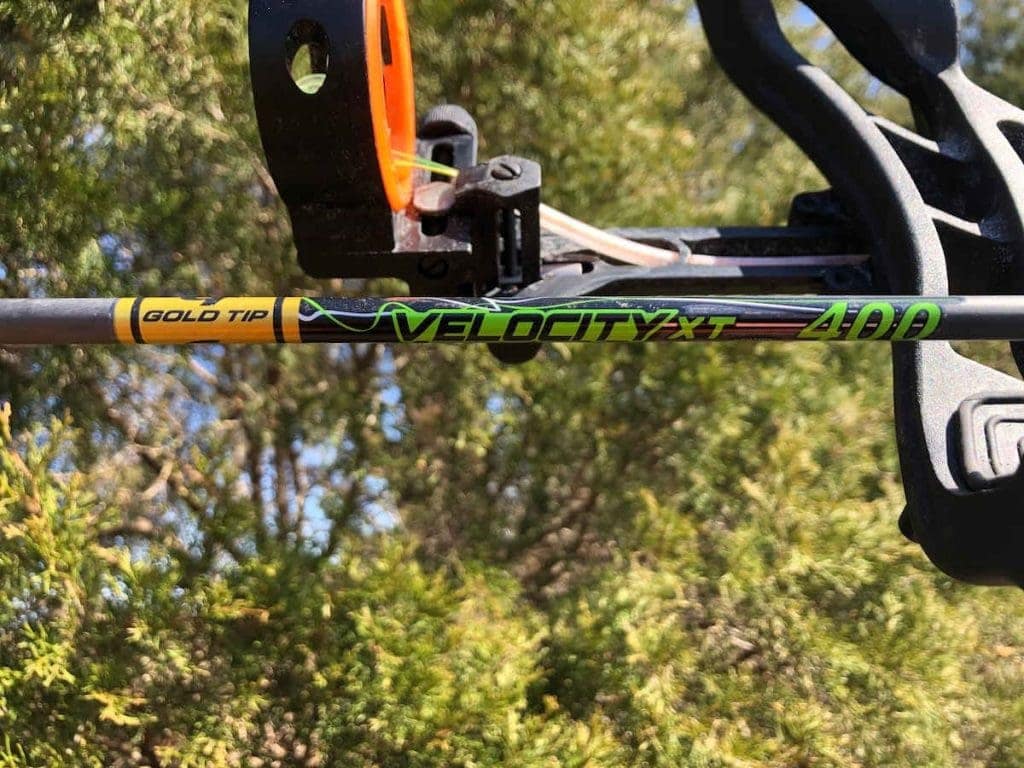A buck rub is essentially a buck’s bold proclamation! It’s a key indicator in your pursuit of a deer. But what does a buck rub tell us beyond that, and how can you interpret it?
A buck rub signals that a certain territory belongs to this particular buck.
He also intends to attract does by leaving behind his scent and pheromones. Interested in how you can leverage this information?
Let’s delve deeper.
Contents (Jump to Topic)
ToggleBuck rubs are both visual and olfactory (chemical) signals. A savvy hunter can use these signs to pinpoint the location of game even before they come into view.
The most effective way to learn how to interpret a buck rub is to study one firsthand or observe an experienced tracker in action.
Velvet Shedding Rubs
So, what exactly are velvet shedding rubs? Shedding typically takes place from late August through early October.
Susan C. Morse, contributing to Northernwoodlands.org, penned an insightful article about the Velvet “Rub Out.” Here’s her take on velvet shedding rubs:
“Increased testosterone levels in the blood of bulls and bucks cause closure of the blood vessels that have nourished the growing antlers, resulting in the dying and shedding of antler velvet. Each male cervid rubs his rack against pliant shrub stems and small trees in order to “rub out” the velvet and prepare hardened antlers for their function in affirming his social and sexual status.”
Source: https://northernwoodlands.org/articles/article/velvet_rub_out
In general, a buck’s age is directly proportional to the size of the sapling rubbed and the extent of the damage inflicted.
Fresh rubs made in September or early October are likely the handiwork of mature bucks marking their home range. Velvet shedding rubs are a visual sign posted by a mature dominant buck on his territory.
To borrow the words of Susan C. Morse, you have stumbled upon “the Holy Grail of tracking deer.”
The bigger the Rub, the bigger the Buck
It is widely accepted that the size of the rub correlates with the size of the buck; Bobby Worthington, writing for Northamericanwhitetail.com, shares his perspective:
“Common rubs appear anytime in the fall after velvet shedding has taken place. However, as a buck’s hormone level rises, rubbing intensifies. Rubbing actively will increase weekly until breeding begins. Even during the peak of the rut, mature bucks still make quite a few rubs.
As is generally believed, the size of the rub has a lot to do with the size and maturity of its maker. If the rub is the size of a person’s finger and the tree is only barely skinned up, the rub was probably made by a 1 1/2- or 2 1/2-year-old buck. Young bucks do not make a lot of rubs unless older bucks (3 1/2 years old or older) are noticeably missing from the area.”
Source: https://www.northamericanwhitetail.com/editorial/huntingtactics_naw_rub_0809/263892
This theory seems plausible and is supported by the observations of many seasoned hunters like Bill Vaznis:
“Though it’s far less familiar to hunters, this is a good maxim, too. A mature buck is taller and stronger and therefore tends to rub farther off the ground. Still, it really applies only to fresh sign in fall; rubs made over packed snow can be high but not made by a big animal.”
Source: https://www.fieldandstream.com/articles/hunting/2016/07/how-to-decipher-the-secrets-of-a-rub/
Different Buck Rubs
Single Rubs
A solitary rub found in the wilderness may not be associated with a travel corridor, a trail, or any other buck sign.
These rubs are likely made by bucks roaming the countryside in search of a doe. Hence they offer little value to hunters trying to pattern a mature buck.
Although these rubs are not random, they can be termed single rubs as they occur in isolation.
read.. perfect hunting land?
Rub-line Rubs
Rub lines can reveal the travel patterns of bucks. These rubs can often indicate the direction of a buck’s travel. In other words, the side of the tree a buck has rubbed can tell you where he came from.
By studying these rubs, you can often determine a buck’s travel patterns. If the rub is located away from the feeding area, it may suggest that the trail/travel corridor was used in the evening.
Rubs that face away from bedding areas are usually made in the morning.
Bill Vanis, contributing to fieldandstream.com, shares his insights on deciphering the secrets of a rub:
“In hilly country, buck rubs that are visible when you’re facing uphill were likely made in the morning, as the animal traveled from his feeding grounds back to his lofty bedding area. Similarly, the ones you see when looking downhill were probably made in the evening. Wherever foraging areas are open and obvious, such as cropfields, the rubs you spot while facing into the woods are morning sign; their opposites, evening sign.”
Source: https://www.fieldandstream.com/articles/hunting/2016/07/how-to-decipher-the-secrets-of-a-rub/
As long as the majority of rubs in a rub line face away from a possible bedding thicket or sanctuary, the buck was likely using the travel corridor early in the day. This information may help hunters decide when to hunt a particular corridor.
Position yourself downwind of the rub that receives the most attention or near the spot where most rubs are found in a small area. His preferred travel patterns cross at the most used rub or rubbing spot; setting up as close as possible makes sense.
Cluster Rubs
Cluster rubs can indicate that a buck’s bedding area is nearby. The buck may be in a staging area where he waits for darkness to descend.
When you see rubs from different times indicating an older or mature buck, it’s a promising place for a stand. Dominant bucks in an area tend to interact more during the rut.
read.. antler growth
One of the biggest mysteries when it comes to rubs is how often a buck revisits. If you find a rubbing cluster, scout the surrounding areas for more rubs and potential bedding areas.
The buck might be returning to his familiar territory, or he might be marking his boundaries.
Rubs made at different times are significant and could be an excellent sign to set up your stand.
Rubs made in clusters by more than one buck, possibly of varying ages and sizes, are very telling. They suggest that bucks are vying for dominance.
read.. How To Identify Trees That Deer Love
Summary
Buck rubs are both visual and chemical signals. If you can “read” the rub, you’ll gain insights into the buck’s size, maturity, and possibly his location.
This knowledge can help you understand a buck’s travel patterns and enable you to set up your stand strategically.
